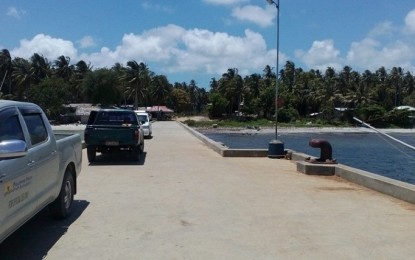
BULILUYAN PORT: The provincial government said it might need two to three months to reopen the roll-on, roll-off (RoRo) sea transport linkage between the Philippines and Malaysia. (File photo)
PUERTO PRINCESA CITY, Palawan -- The Palawan provincial government said Monday it will need two to three months more to prepare for the reopening of the roll-on, roll-off (RoRo) sea transport linkage between the Philippines and Malaysia.
Provincial Information Officer Gil Acosta in an interview said the supposed test run of the Buliluyan and Kudat RoRo ports in April was cancelled following the May 9 election of the 14th Parliament of Malaysia.
“Give us two to three months to prepare again for the new sets of officers in Malaysia. We hope this time the opening will push through because both ports are ready -- one in Buliluyan and the other in Kudat,” he said.
The sea linkage route is expected to be serviced by Fastcat, a fleet of Catamaran-type RoRo vessels, being operated by Archipelago Philippine Ferries Corporation (APFC).
The latest development in the Brunei Darussalam-Indonesia-Malaysia-Philippines East ASEAN Growth Area (BIMP-EAGA) transport connection came in the wake of Palawan Governor Jose Alvarez’ expression of interest to convert the RoRo dock into a cruise ship port.
Acosta said this is to accommodate international cruise liners that might be interested in also bringing tourists to the province.
"This port will be expanded into a cruise port as we want Palawan to be the number one cruise port terminal in Southeast Asia, which is very in line with our tourism endeavor in the province," Acosta added.
The Buliluyan Port’s development was funded PHP125 million by the Philippine Ports Authority under the initiative of the provincial government. (PNA)
